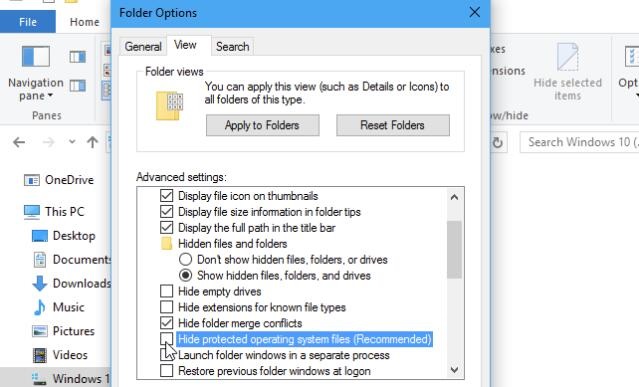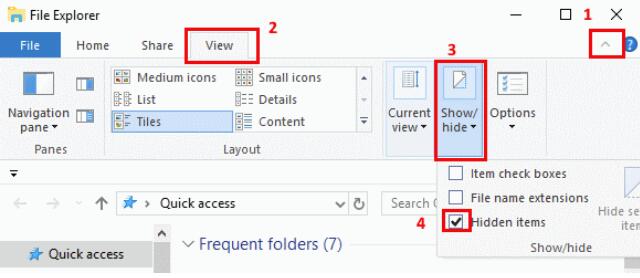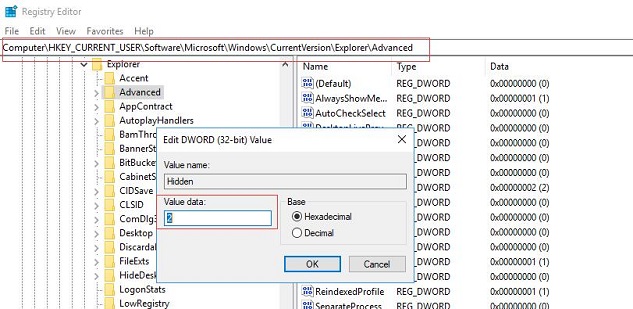How to Show/See/View Hidden Files in Windows 10
Quick Navigation:
- Method #1. One scan to show all hidden files on your Windows 10 PC
- Your Effective Windows 10 Show Hidden File Software
- Steps for How to Show Hidden Files in Windows 10
- Method #2. Show hidden files in Windows 10 via the control panel
- Method #3. View hidden files in Windows 10 via File Explorer
- Method #4. Show hidden files in Windows 10 via the command line
Many people asked how to show hidden files in Windows 10. For some reasons, they want to know whether there are some files they need among all the hidden files or check out the hidden system related files. Whatever your purposes are, here are the 4 ways for how to see hidden files in Windows 10, hopefully, they're effective. Let's start to show hidden file in Windows 10.
Method #1. One scan to show all hidden files on your Windows 10 PC
The mission for every software tool is to ease people's lives, making it very easy for people to find the right files, get the tasks done, summarizing as "hit the mark". To show hidden file in Windows 10, you can also get the help of software. Here in this article, I'd like to recommend Deep Data Recovery. What is it? How does it work? Let's see how to help you show hidden file on Mac or Windows PC.
Qiling data recovery software, as its name tells, it is able to recover data on the computer. Anything to do with the "show hidden files in Windows 10"? Of course, it is able to scan the whole computer for all the selected file types, then display all the files it found, letting you preview all the hidden files before you saving them to any places on the computer. Here are some of its salient features:
Your Effective Windows 10 Show Hidden File Software
- Supports view hidden more than 500 file types, covering photos, videos, audio files, documents, emails and more.
- 2 scan mode: Quick Scan saves time and Deep Scan generate a better Windows 10 show hidden files result.
- Allows users to preview and save all found files to the pointed directory.
- Able to scan for lost files which are hidden on your Windows 10 PC and fully compatible with recover deleted files in Windows 10 even emptied recycle bin.
Steps for How to Show Hidden Files in Windows 10
Download the software to show hidden files in Windows 10 now! Here are the simple steps for how to view all hidden files in Windows 10 with Deep Data Recovery:
- Click the download button to get the .exe file on your PC.
- Double-click it and follow the built-in wizard to install the software.
- Launch it. You need to select the partition where the hidden files are saved to scan. And then, click "Scan".
- Select the files to preview
- In this window, you can see the software finding for the hidden files in Windows 10.
- When finding the target files, select them and click "Recover" to save them on your computer.


Method #2. Show hidden files in Windows 10 via the control panel
By default, some important Windows 10 system files are hidden. You can show the hidden files via Control Panel.
- Click the start button at the bottom left, then click the "Windows System"
- Find "Control Panel", and then select "File Explorer". Click "View".
- Scroll down and check "Show hidden files, folders, and drives" and uncheck "Hide protected operating system files (Recommended)".

Method #3. View hidden files in Windows 10 via File Explorer
- Click the "Start" button at the bottom left, and find "File Explorer".
- Select the "View" tab, check the "Hidden items" to show hidden items.

Method #4. Show hidden files in Windows 10 via the command line
If you know some computer techniques, you can try the command line to show hidden files in Windows 10 as well. Here are the steps:
- Hold the "Windows" and press "R" to show the Run dialogue box.
- Type "regedit" and press "Enter". Navigate to: HEY_CURRENT_USER > Software > Microsoft > Windows > CurrenVersion > Explorer > Advanced
- Set the value for "Hidden" to "1" to show hidden files and set the value for "ShowSuperHidden" to "1" to show operating system files

Related Articles
- How to Recover Deleted and Unsaved Notepad Text Files in Windows 7/10
- Restore Deleted Files on C Drive in Windows 10/11/8/7
- How to Recover Deleted Hidden Files in Windows 10
- How to Recover Corrupted Files in Windows 10/11
- How to Recover Deleted Files from SD Card in Windows 10
- How to Recover Files Lost after Cut and Paste in Windows 11/10